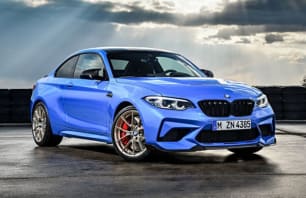For the F40 generation, the 1 Series range has been cut back to two variants from launch, with the 118i for volume sales and the M135i xDrive hot hatch taking aim at the new Mercedes A35 and the Audi S3.
Both versions were priced $4000 higher than the equivalent models they replaced from launch, but have recently jumped a further $3000 and $4000 respectively. This puts the now-$45,990 118i beyond the starting prices for the equivalent Audi and Mercedes, and the $68,990 M135i xDrive is now nudging the A35’s list price.
The launch prices were largely offset by extra equipment over the previous generation, but the more recent hikes have taken the shine of this somewhat.
Thankfully, both 1 Series models now come standard with wireless Apple CarPlay. The previous ‘one year free, the rest you need to subscribe for’ plan has been scrapped since we shot the launch video below in favour of free CarPlay for life. There’s still no Android Auto, but this is due to change in July.
The 118i packs more standard equipment than before in general, including the M Sport styling pack, head up display, wireless phone charger and adjustable ambient lighting.
The M135i adds bigger brakes, a rear spoiler and 19-inch wheels, plus sport seats with leather trim, and Harman/Kardon audio among a few other things.
You can get even more from the M135i with the $1900 M Performance Package, which drops the 0-100km/h claim by one tenth to 4.7s thanks to enabling engine overboost and lighter forged 18-inch alloys, which is signified by gloss black grille surrounds, intake elements in the front bumper, mirror caps and exhaust tips.
Other options include the $2900 Enhancement Package, which brings metallic paint and a panoramic glass roof. On the 118i, it also brings 19-inch black alloys. On the M135i, it also brings active cruise control with stop and go function. This package costs an extra $500 if Storm Bay metallic is chosen.
The Comfort Package costs $2300 with the 118i and $923 with the M135i, and brings front seat heaters and lumbar adjustment for both front seats. On the 118i, it also brings proximity keys and electric front seat adjustment. On the M135i, it also brings a heated steering wheel.
The Convenience Package costs $1200 with either variant, and adds a powered hatch, modular storage system and cargo net and a ski port for the back seat.
The 118i can also be optioned with the $1000 Driver Assistance Package, which adds active cruise control (plus 0-60km/h AEB), adaptive LED headlights with auto high beams and a tyre pressure monitor.
Beyond the 118i’s standard M Sport pack, it can also be augmented with the $2100 M Sport Plus Package. This brings sports front seats, a rear spoiler, M-coloured seat belts, a sports steering wheel and upgraded M Sport brakes.

